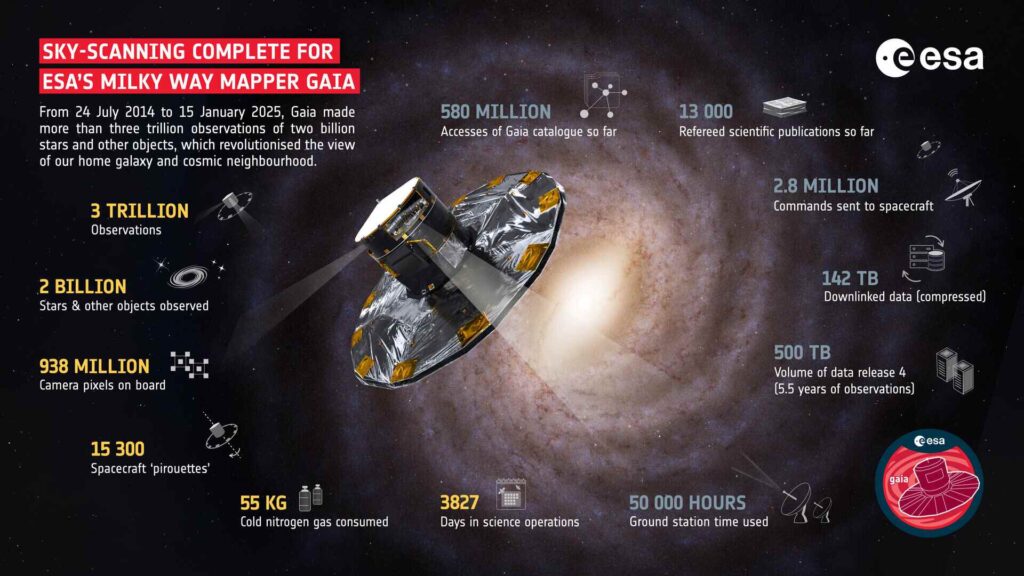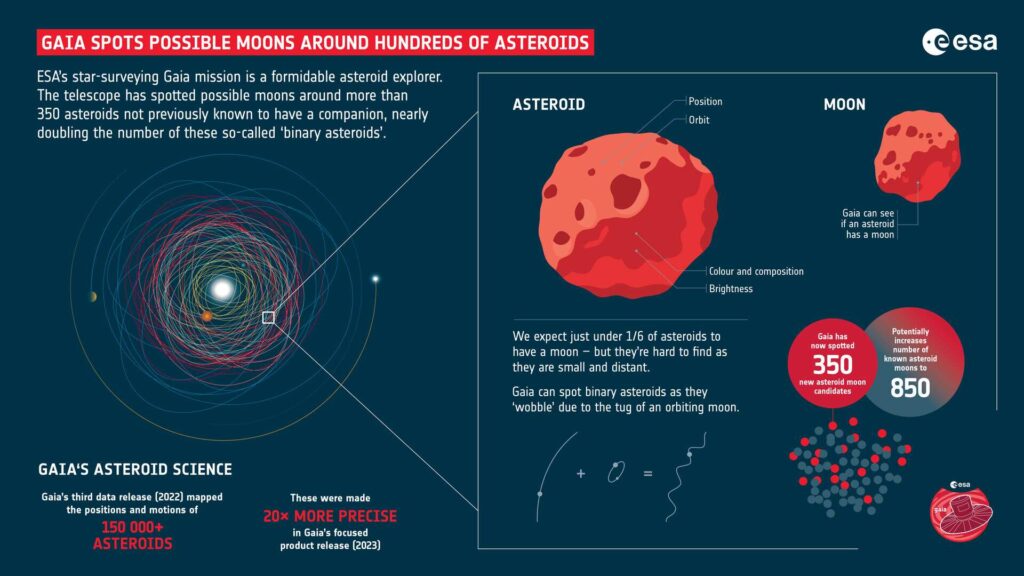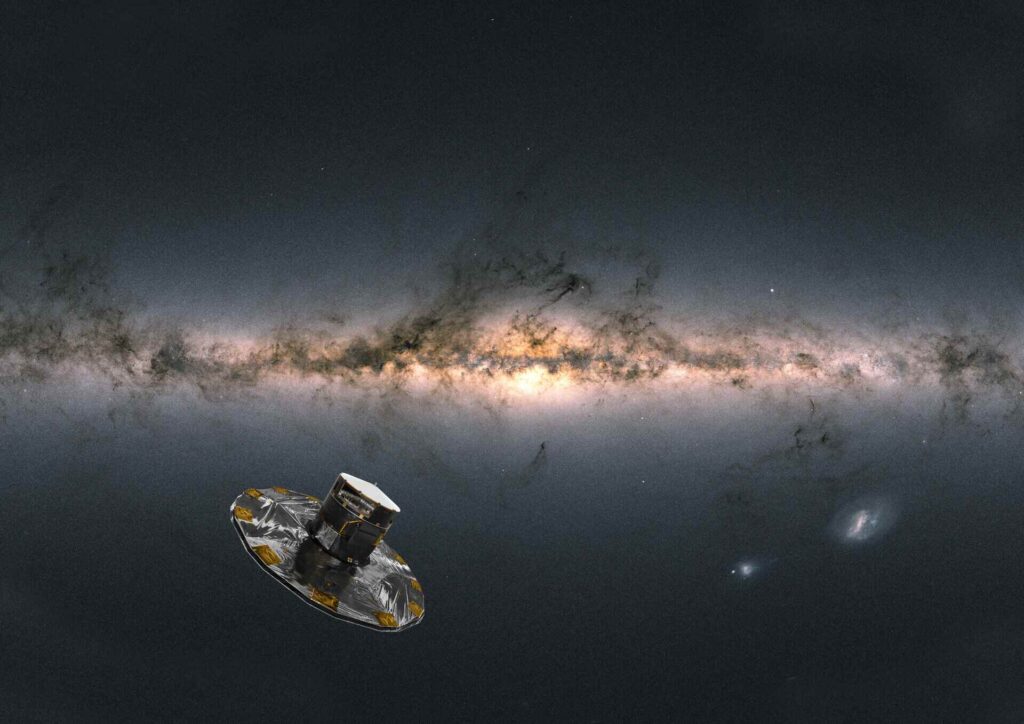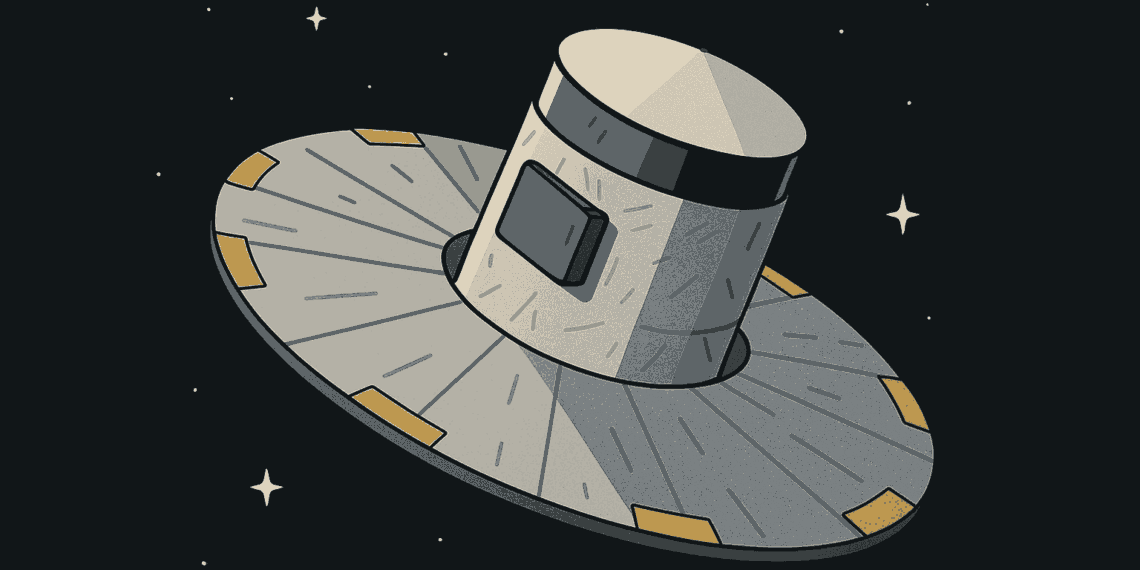The Gaia Space Telescope, a groundbreaking mission by the European Space Agency (ESA), has transformed our understanding of the Milky Way. Since its launch on December 19, 2013, Gaia has spent more than a decade charting the stars with remarkable accuracy, reshaping our knowledge of the cosmos.
After more than a decade of groundbreaking discoveries, Gaia’s journey has officially come to an end. On March 27, 2025, ESA shut down the telescope as it ran out of fuel, closing the chapter on one of the most ambitious space mapping missions in history. Though Gaia is no longer active, its legacy will continue shaping our understanding of the universe for years to come.
Contents
The Purpose and Achievements of Gaia Space Telescope

The Gaia Space Telescope was designed to create the most precise 3D map of our galaxy. Over the years, it has mapped more than 2.5 billion stars, providing scientists with an unprecedented view of how stars move and evolve. This wealth of data has deepened our understanding of the Milky Way’s structure and history, revealing details that were once beyond our reach.

Gaia has made some incredible discoveries over the years, including:
- Revealing the true shape of the Milky Way: One of Gaia’s most stunning revelations is that the Milky Way isn’t just a flat disk. Instead, its edges appear warped—almost like a cosmic cloth billowing in the wind.
- Discovering stellar collisions: Thanks to Gaia, we now know that 5.7 billion years ago, the Milky Way merged with a smaller galaxy—an event that might have even shaped our solar system.
- Identifying black holes and exoplanets: Gaia’s journey has led to some mind-blowing discoveries—new black holes, thousands of exoplanets, and insights we never imagined.
- Charting asteroid orbits: Gaia has significantly improved our understanding of over 150,000 asteroids in the solar system, refining predictions about their paths.
History of the Gaia Space Telescope
-
October 1993 – The idea for Gaia is born, setting the stage for a groundbreaking space mission.
-
October 2000 – ESA accepts the Gaia mission.
-
February 2006 – Airbus Defence & Space (formerly EADS Astrium) is appointed prime contractor.
-
2007 – The management of Gaia data processing is entrusted to the Data Processing and Analysis Consortium (DPAC).
-
December 19, 2013 – Gaia is launched from Kourou.
-
January 8, 2014 – Gaia successfully reaches its home in space, settling into orbit around the L2 Lagrange point.
-
July 2014 – The Beginning of the scientific mission.
-
September 14, 2016 – Publication of the first Gaia catalogue.
-
April 25, 2018 – Publication of the second Gaia catalogue.
-
December 3, 2020 – Publication of the early dates of the third Gaia catalogue.
-
2022 – Publication of the third Gaia catalogue.
-
2023 – The mission will be extended until the second quarter of 2025.
-
July 25, 2024 – Gaia Celebrates Ten Years of Scientific Operations.
-
2025 – End of scientific observations.
Why Is the Gaia Space Telescope Shutting Down?

Gaia’s journey is coming to an end because it’s running out of fuel, making further observations impossible. The spacecraft uses small amounts of nitrogen gas to maintain its precise alignment while scanning the sky. With only a limited supply, ESA has determined that by early 2025, Gaia will no longer be able to function effectively.
To prevent Gaia from drifting in space, ESA plans to steer it into a stable heliocentric orbit. Once there, it will remain as inactive space debris. Before shutting down, Gaia’s last bit of fuel will be used to fine-tune its instruments—valuable data that could improve future space missions.
What Happens to Gaia Space Telescope Data?
Gaia’s mission may be ending, but its vast data archive will remain valuable to astronomers for decades to come. ESA has planned additional data releases in 2026 and 2030, which are expected to refine our knowledge of star movements, black holes, and exoplanets.
The Future of Space Mapping Missions
While Gaia’s mission is ending, its legacy will pave the way for future projects. ESA and other space agencies are already discussing follow-up missions that will build on Gaia’s findings. However, due to the complexity of such projects, the next major space mapping telescope isn’t expected to launch before 2045.
Conclusion
Gaia has truly changed the way we see our galaxy. From mapping stars to discovering black holes, its impact on astronomy will last for generations. As the mission comes to a close, even as Gaia shuts down, its data will keep unlocking cosmic secrets for years to come. The stars may be distant, but thanks to Gaia, they’ve never been closer to our understanding.
Gaia’s Legacy & Future Updates: It’s amazing how Gaia has reshaped our view of the galaxy. Even though its mission is ending, the data it has collected will keep astronomers busy for years!. If there are any new findings or updates related to the Gaia Space Telescope, we will update this article. Follow our website for the latest insights: WhatIsAndHowTo.com.

